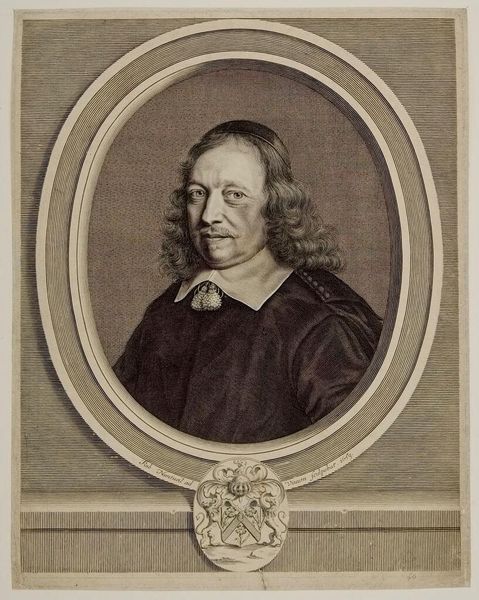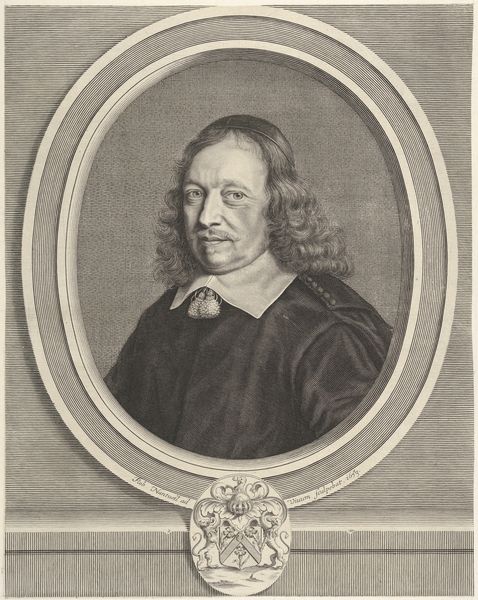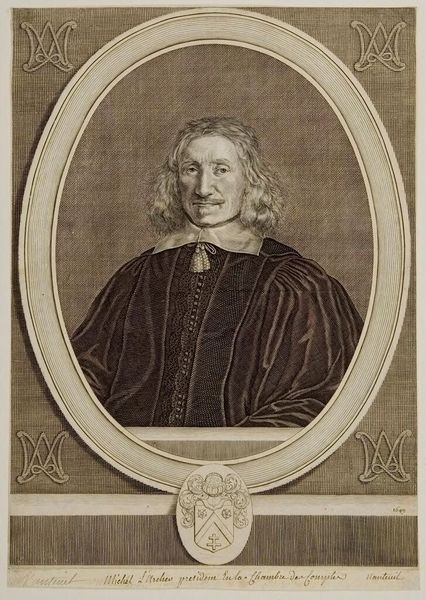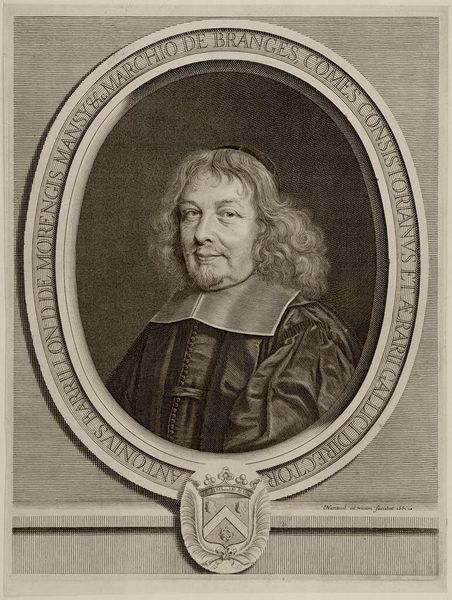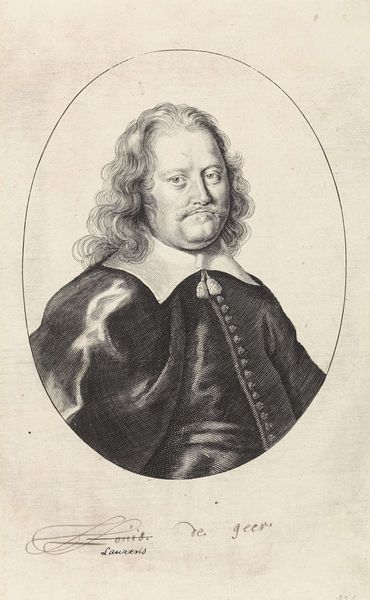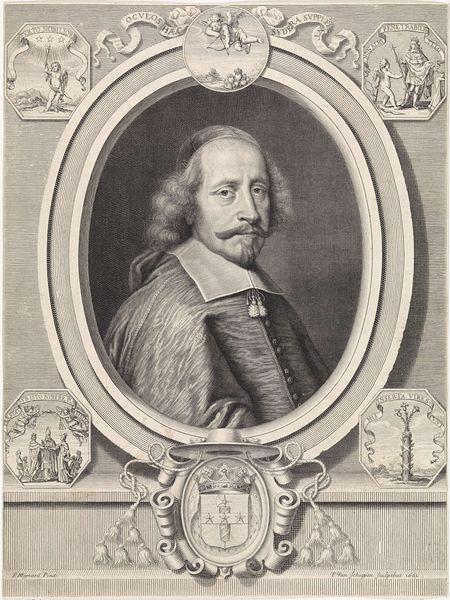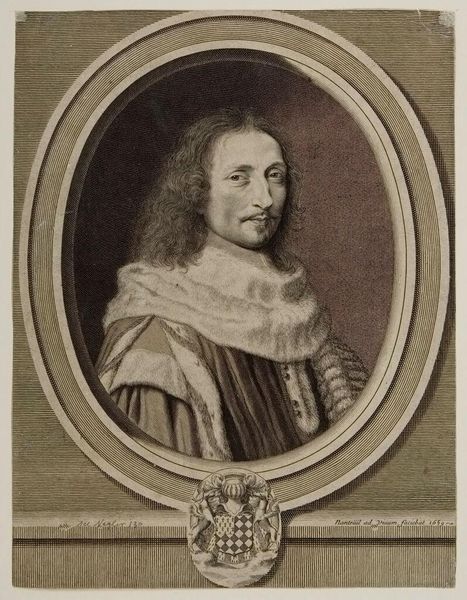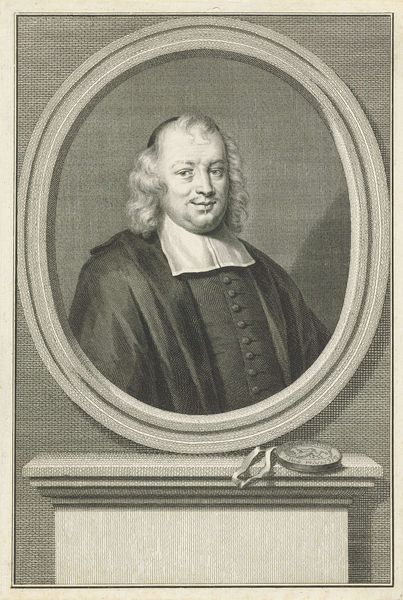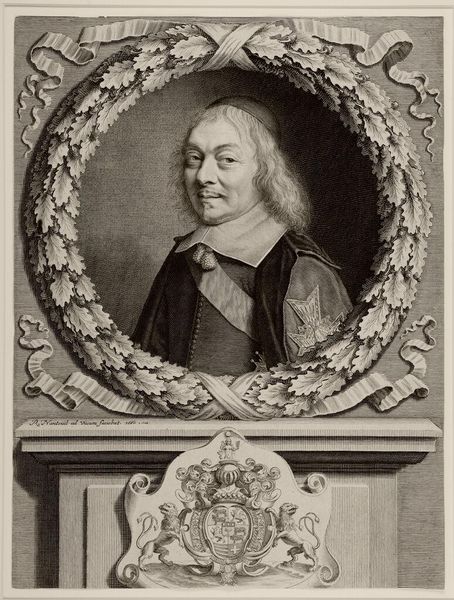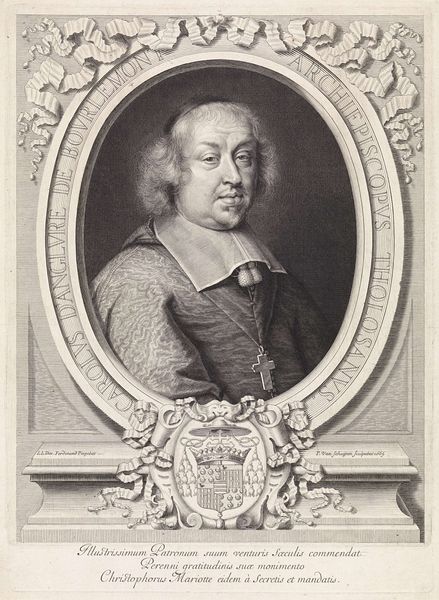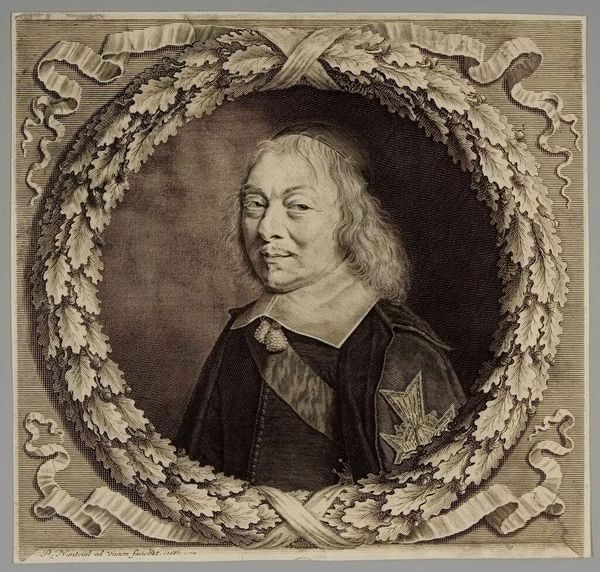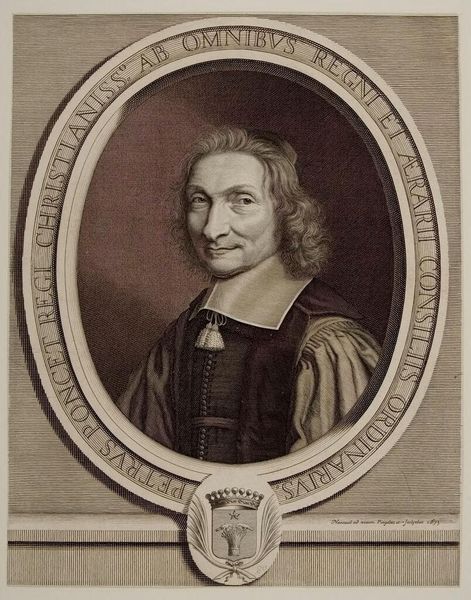
Copyright: CC0 1.0
Curator: This is Robert Nanteuil's portrait of Gilles Blondeau, a print that captures the sitter with a gentle, almost melancholic air. Editor: The oval frame and the subtle gradations of light really add to that feeling. How does this portrayal engage with the visual rhetoric of its time? Curator: Nanteuil, working in the 17th century, tapped into the rising importance of portraiture within the French social and intellectual circles. Blondeau's attire, though refined, is simple, suggesting a man of intellect rather than pure ostentation. Editor: It's interesting to consider how this image positions Blondeau within a specific social and political landscape. Are we meant to see him as an ally or a figure of power? Curator: It's more nuanced than that, I think. The portrait hints at the performative nature of identity, reflecting the complexities of class and gender within the visual vocabulary of the era. Editor: Examining the work through this lens enriches our understanding of its cultural significance. It reminds us that portraits are not just representations of people, but also embodiments of power. Curator: Exactly, and seeing how those dynamics play out is what makes engaging with historical portraiture so rewarding. Editor: Indeed. It allows us to contemplate the enduring dialogue between art, identity, and the socio-political forces that shape our world.
Comments
No comments
Be the first to comment and join the conversation on the ultimate creative platform.
